- MOE
- National Parks of Japan
- Sanriku Fukko (reconstruction) National Park
- Characteristics
main body
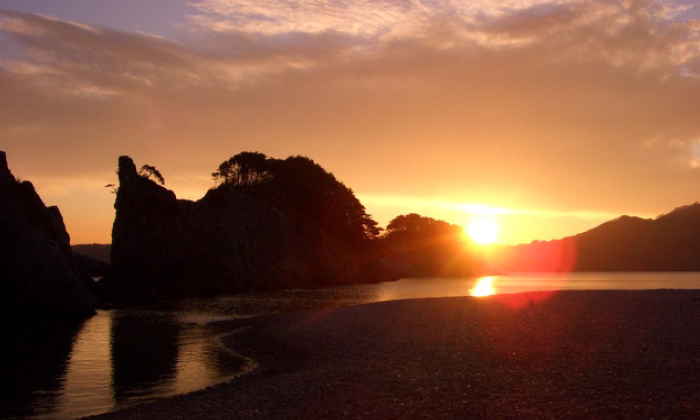
Characteristics
Come here to experience the life and culture nurtured through the bounty and dangers of nature and the coexistence of man and nature.
Date of Designation: May 2, 1955 (as Rikuchukaigan National Park) / May 24, 2013 (as Sanriku Fukko (reconstruction) National Park)
Area: 28,537 ha (land area)
Related Prefectures: Aomori, Iwate, Miyagi
Area: 28,537 ha (land area)
Related Prefectures: Aomori, Iwate, Miyagi
The Sanriku Fukko (Reconstruction) National Park was created in May 2013 to contribute to the reconstruction of the Sanriku region that was devastated by the Great East Japan Earthquake in 2011.
The park extends to the north and south approximately 220 km, and the northern part is also called the "Alps of the Ocean" with its dynamic cliffs. You can see a beautiful ria coast with its complex topography at the south. The coast is a breeding ground for seabirds, such as the black-tailed gull and streaked shearwater. Additionally, the coasts are a habitat for a diverse collection of maritime plants that have adapted to the unique coastal environment and visitors have an opportunity to observe wildlife up close. In the shallow waters, eelgrass beds and seaweed beds have formed, supporting the biological diversity of the maritime area.
There are some of Japan's largest fishing ports at Hachinohe, Miyako, Kamaishi, Ofunato, and Kesennuma, and visitors can enjoy fresh seafood. This national park is unlike any other in Japan as it was created for the purpose of reconstruction from a disaster, and people from all over the country visit this park to learn about disaster prevention.
The park extends to the north and south approximately 220 km, and the northern part is also called the "Alps of the Ocean" with its dynamic cliffs. You can see a beautiful ria coast with its complex topography at the south. The coast is a breeding ground for seabirds, such as the black-tailed gull and streaked shearwater. Additionally, the coasts are a habitat for a diverse collection of maritime plants that have adapted to the unique coastal environment and visitors have an opportunity to observe wildlife up close. In the shallow waters, eelgrass beds and seaweed beds have formed, supporting the biological diversity of the maritime area.
There are some of Japan's largest fishing ports at Hachinohe, Miyako, Kamaishi, Ofunato, and Kesennuma, and visitors can enjoy fresh seafood. This national park is unlike any other in Japan as it was created for the purpose of reconstruction from a disaster, and people from all over the country visit this park to learn about disaster prevention.
Terrain/ Scenery

Tanesashi Coast Viewed from the Ashigezaki Viewpoint
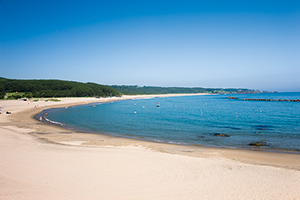
Osuka Beach
Topography of Tanesashi and Hashikami Coast and Mt. Hashikami
The area has a mix of rocky coasts with scattered rock formations and wide sand beaches and in locations where the terrace surfaces of marine terraces loom over the coast, sea cliffs are formed. At Mt. Hashikami, you can see the outcrops of granodiorite.
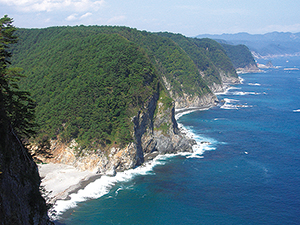
Unosudangai
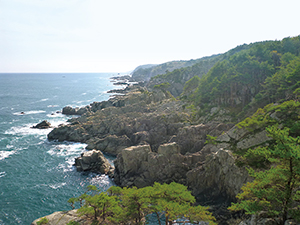
Samurai Beach
Topography of the Northern Part of Rikuchu Coast
Consisting mainly of sea cliffs and marine terraces formed with terrace surfaces, some of the sea cliffs reach heights of 200 m. Rich with changes in terrain such as sea cliffs, sea caves, sea shelves, and reefs, this area is also a breeding ground for seabirds.
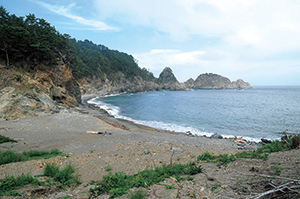
Pebble Beach of Tochinaihama, Coastal Vegetation, and the Sea Coast
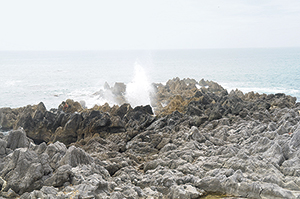
Limestone and Shiofukiana of Iwaisaki
Topography of the Southern Part of Rikuchu Coast
A typical ria coast is formed with sea cliffs at the tips of bay heads. Inner bays are formed inside the complex coastline and visitors can observe small sand (pebble) beaches in addition to rocky shores.
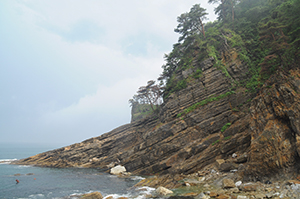
Geological Layers of Raga Coast (Exposed Aketo and Hiraiga Formations)
Geology
The geology consists mainly of the Chichibu Paleozoic layer that forms the framework of the Kitakami mountains, and the igneous rock that intruded this layer and there are also some partial distributions of Cretaceous formations and tertiary formations. These various types of rocks have reacted differently to the erosive effect of the ocean and have given the coastal line its diverse terrain. Many fossils have been discovered in the Cretaceous formation layers in the north, and the Raga Coast, in particular, is academically valuable as a coast that has produced some of Japan's representative Cretaceous fossils. A dinosaur fossil (Moshiryu) was discovered in the Moshi area. Amber is produced in the area around Kuji City, and it has been used in accessories and as a fragrance.
Plants
Consisting mainly of coastal plant communities that developed at Tanesashi-Hashikami Coast and Mt. Hashikami, this region has grasslands and fields of flowers. A diverse collection of plants grow along the ever-changing coastline with its cliffs, dunes, grassy areas, and salt marshes. Mt. Hashikami is mainly covered with deciduous trees and Japanese cedar plantations, and in the higher altitudes, you can see grass fields and communities of Yamatsutsuji (rhododendron).
The area of the Rikuchu Coast is mainly covered with red pine, and depending on the environment, the cliffs and sand dune vegetation have also developed. There are also localized groups of rare vegetation such as the community of Shirobana Shakunage (rhododendron) in Kitayamazaki and the virgin forest of tabu trees in Funakoshi Oshima Island.
The area of the Rikuchu Coast is mainly covered with red pine, and depending on the environment, the cliffs and sand dune vegetation have also developed. There are also localized groups of rare vegetation such as the community of Shirobana Shakunage (rhododendron) in Kitayamazaki and the virgin forest of tabu trees in Funakoshi Oshima Island.
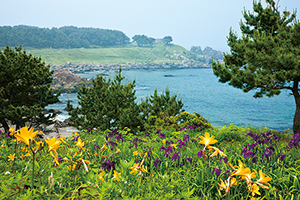
Flower Fields of Tanesashi Coast
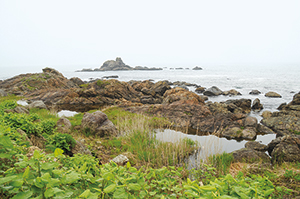
Coastal Salt Marshes
There are seaweed beds where seaweeds such as gulfweed and sea lettuce are dominant and eelgrass beds, creating a habitat for marine life.
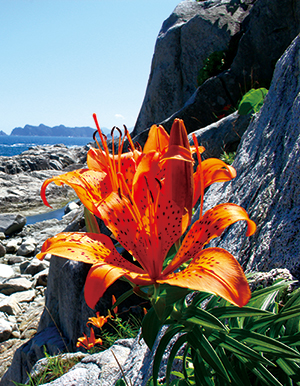
Thunberg Lily Blooming among the Rocks
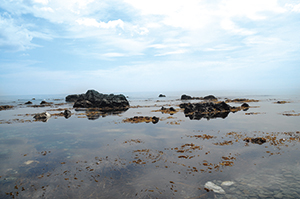
Coastal Reefs with Lush Seaweed
Wildlife
This area is particularly important as a breeding ground for seabirds, and Hidejima Island and Sanganjima Island are the only breeding grounds in Japan for the band-rumped storm-petrel. The area is also a habitat for birds of prey such as the peregrine falcon and osprey.
Organisms such as greenling, rock fish, sea urchin, and abalone, which also important fishery resources also inhabit this area.
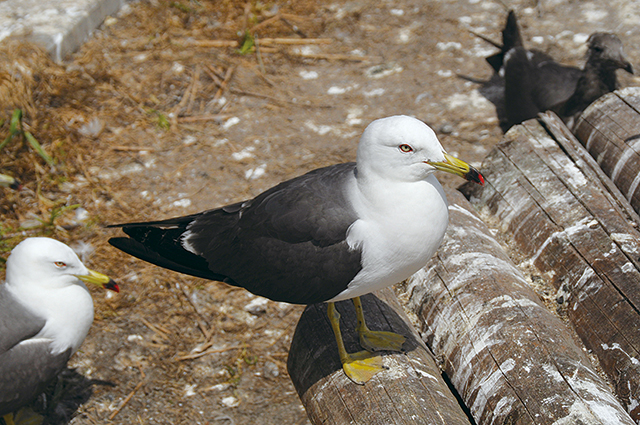
Black-tailed Gull
Culture
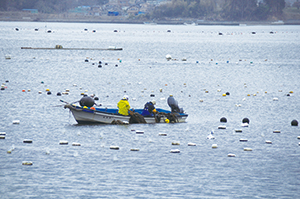
Scene of the Wakame Seaweed Harvest (Kesennuma Oshima Island)
Industrial Landscape
There are many fishing ports along the coast, and fixed nets are set on the ocean, so visitors can look down at the traffic of fishing boats from the viewpoint. In the bay area in the southern part of the park where there are ria coasts, there are a multitude of floating rafts for farming oysters and scallops, and buoys for farming wakame seaweed and visitors can enjoy the typical scenes of a fishing community.

Tanesashi Lawn Field
Additionally, the Tanesashi Coast has a vast grassland that was maintained by human influence such as horse grazing.
Events and Customs
There are records of many customs related to the ocean and mountains such as a ritual for placing a spirit inside a newly built ship, a talisman for fishermen for a good catch called "Yamaokoze," and "Yamaate," which is a method of determining your current position on the ocean by the appearance of the mountains. There are also traditional events such as the "Suneka" which is similar to the Namahage of Akita, and the folk performing art "Kuromori Kagura".
